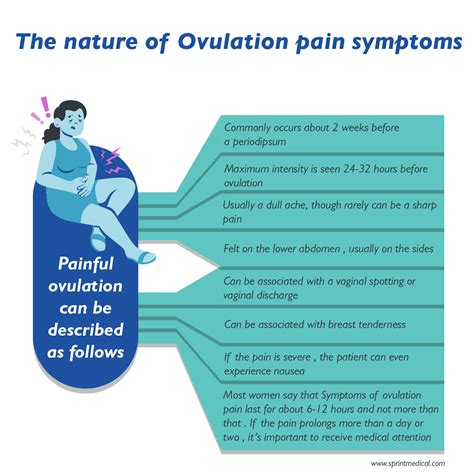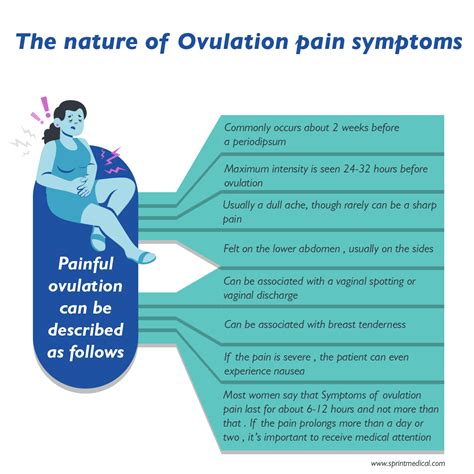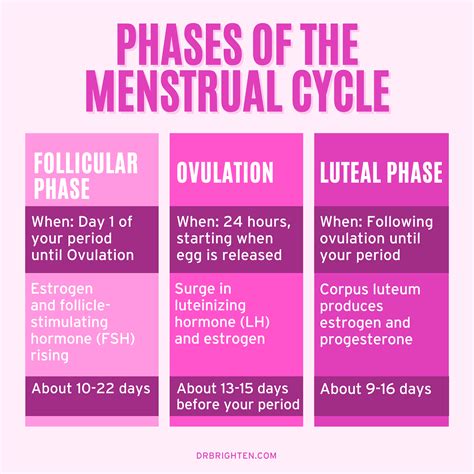Intro
Learn about ovulation pain causes, symptoms, and relief. Understand mittelschmerz, ovary pain, and menstrual cycle connections.
Ovulation is a natural part of the female reproductive cycle, occurring when the ovary releases an egg for potential fertilization. While many women experience ovulation without any symptoms, some may notice mild to severe discomfort, often referred to as ovulation pain. This phenomenon affects a significant number of women, with estimates suggesting that up to 40% of women experience some form of ovulation pain. Understanding the causes, symptoms, and potential remedies for ovulation pain can provide relief and reassurance for those who experience it.
The experience of ovulation pain can vary greatly from woman to woman, both in terms of intensity and duration. Some may feel a sharp, stabbing pain, while others may experience a dull ache or a sensation of heaviness in the lower abdomen. The pain is usually localized to one side of the abdomen, corresponding to the ovary that is releasing the egg, and can switch sides from month to month. Despite its variability, ovulation pain is generally considered a normal part of the menstrual cycle and is not typically a cause for concern.
However, for some women, ovulation pain can significantly impact daily activities, making it essential to explore the reasons behind this discomfort. The exact mechanisms behind ovulation pain are not fully understood, but several theories suggest that it may be related to the rupture of the follicle, the contraction of the fallopian tube or uterus, or the release of various chemicals and hormones during ovulation. Understanding these mechanisms can help in developing strategies to manage and alleviate the discomfort associated with ovulation.
Ovulation Pain Causes and Mechanisms

Several factors contribute to the experience of ovulation pain. One of the primary causes is the rupture of the follicle, which releases the egg from the ovary. This rupture can cause a small amount of bleeding into the pelvic cavity, leading to irritation of the lining of the pelvis and resulting in pain. Additionally, the contraction of the fallopian tube or uterus in response to ovulation can also cause discomfort. The release of prostaglandins, hormone-like substances involved in various bodily functions including pain and inflammation, is another potential contributor to ovulation pain.
Role of Hormones in Ovulation Pain
The hormonal changes that occur during ovulation also play a significant role in the experience of ovulation pain. The surge in luteinizing hormone (LH) that triggers ovulation can lead to increased prostaglandin production, enhancing the sensitivity of pain receptors. Furthermore, the drop in estrogen levels right before ovulation can affect the uterine lining, potentially leading to cramping and discomfort.Symptoms of Ovulation Pain

The symptoms of ovulation pain can vary but typically include a sharp pain or a dull ache in the lower abdomen. This pain is often one-sided, corresponding to the side from which the egg is released, and can switch sides from one menstrual cycle to the next. Some women may also experience mild vaginal bleeding or spotting, increased cervical mucus, and heightened senses of smell or taste around the time of ovulation. Understanding these symptoms can help women identify when they are ovulating, which can be particularly useful for those trying to conceive.
Distinguishing Ovulation Pain from Other Conditions
It's essential to distinguish ovulation pain from other conditions that may cause similar symptoms. Conditions such as endometriosis, ovarian cysts, and pelvic inflammatory disease can cause chronic or severe pelvic pain and should be evaluated by a healthcare provider if suspected. Appendicitis, which causes severe pain on the right side of the abdomen, is another condition that requires immediate medical attention. A healthcare provider can help determine the cause of pelvic pain and provide appropriate treatment or reassurance.Managing Ovulation Pain

While ovulation pain is generally not a cause for concern, it can be uncomfortable and may interfere with daily activities. Several strategies can help manage ovulation pain, including over-the-counter pain relievers such as ibuprofen or acetaminophen, which can help reduce pain and inflammation. Applying heat to the lower abdomen, such as with a heating pad or warm bath, can also provide relief. Engaging in regular exercise, practicing relaxation techniques like deep breathing or meditation, and maintaining a healthy diet can contribute to overall reproductive health and may help alleviate ovulation pain.
Lifestyle Changes for Relief
Making certain lifestyle changes can also help in managing ovulation pain. Staying hydrated by drinking plenty of water can help reduce bloating and discomfort. Avoiding heavy lifting or strenuous activities during the time of ovulation may also help minimize discomfort. For some women, tracking their menstrual cycle and anticipating when ovulation is likely to occur can help them prepare and take steps to mitigate potential discomfort.Ovulation Pain and Fertility

Ovulation pain can be an indicator of ovulation, which is a critical factor for women trying to conceive. Understanding the timing of ovulation can help couples plan intercourse during the most fertile window, typically the day of ovulation and the five days preceding it. While ovulation pain itself does not directly affect fertility, being aware of its occurrence can help women identify when they are most likely to conceive.
Tracking Ovulation for Conception
For women trying to get pregnant, tracking ovulation can be a useful tool. Besides experiencing ovulation pain, other signs of ovulation include an increase in basal body temperature, changes in cervical mucus, and ovulation predictor kits that detect the LH surge in urine. Combining these methods can provide a more accurate prediction of ovulation, increasing the chances of successful conception.Conclusion and Future Directions

In conclusion, ovulation pain is a common experience for many women, caused by a combination of hormonal changes, follicular rupture, and uterine contractions. While it can be uncomfortable, ovulation pain is generally not a cause for concern and can be managed with over-the-counter pain relievers, heat application, and lifestyle changes. Understanding ovulation and its associated symptoms can also aid women in tracking their fertile window, which is particularly useful for those trying to conceive. As research continues to uncover the intricacies of the female reproductive cycle, women can look forward to more targeted and effective strategies for managing ovulation pain and optimizing their reproductive health.
Final Thoughts on Ovulation Pain
Ovulation pain, while sometimes uncomfortable, is a natural part of the menstrual cycle for many women. By recognizing the signs of ovulation and understanding the mechanisms behind ovulation pain, women can better navigate their reproductive health. Whether trying to conceive or simply seeking to manage discomfort, being informed about ovulation and its associated symptoms empowers women to take control of their health and well-being.What is ovulation pain, and how common is it?
+Ovulation pain, also known as mittelschmerz, is a type of pelvic pain that some women experience during ovulation. It's estimated that up to 40% of women experience ovulation pain at some point in their lives.
What are the symptoms of ovulation pain?
+The symptoms of ovulation pain can include a sharp pain or a dull ache in the lower abdomen, usually on one side, which can switch sides from one menstrual cycle to the next. Some women may also experience mild vaginal bleeding or spotting and increased cervical mucus.
How can ovulation pain be managed?
+Ovulation pain can be managed with over-the-counter pain relievers such as ibuprofen or acetaminophen, applying heat to the lower abdomen, and making lifestyle changes such as staying hydrated and avoiding strenuous activities during ovulation.
We invite you to share your experiences and questions about ovulation pain in the comments below. Your insights can help others better understand and manage their reproductive health. Additionally, if you found this article informative, please consider sharing it with others who may benefit from this information.
